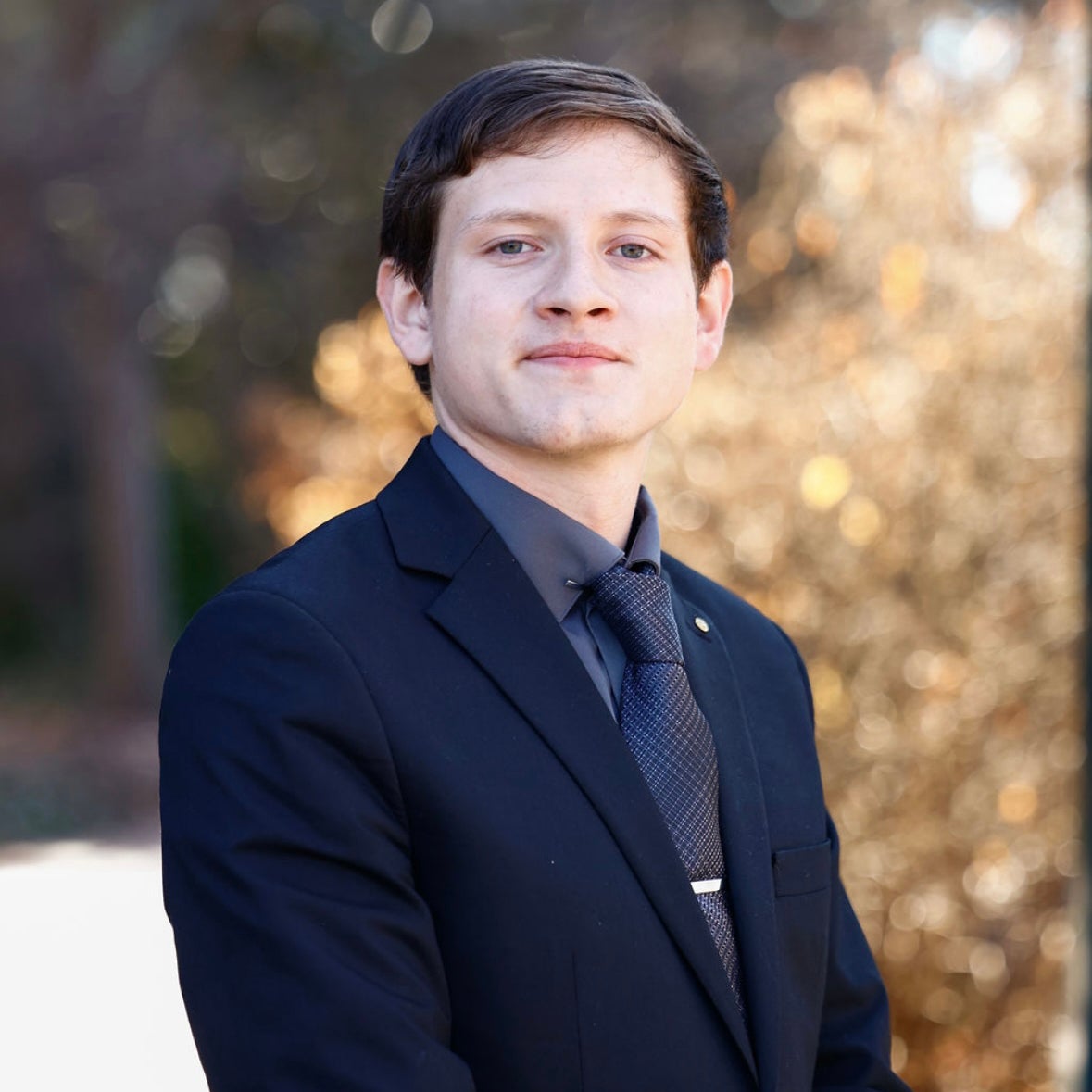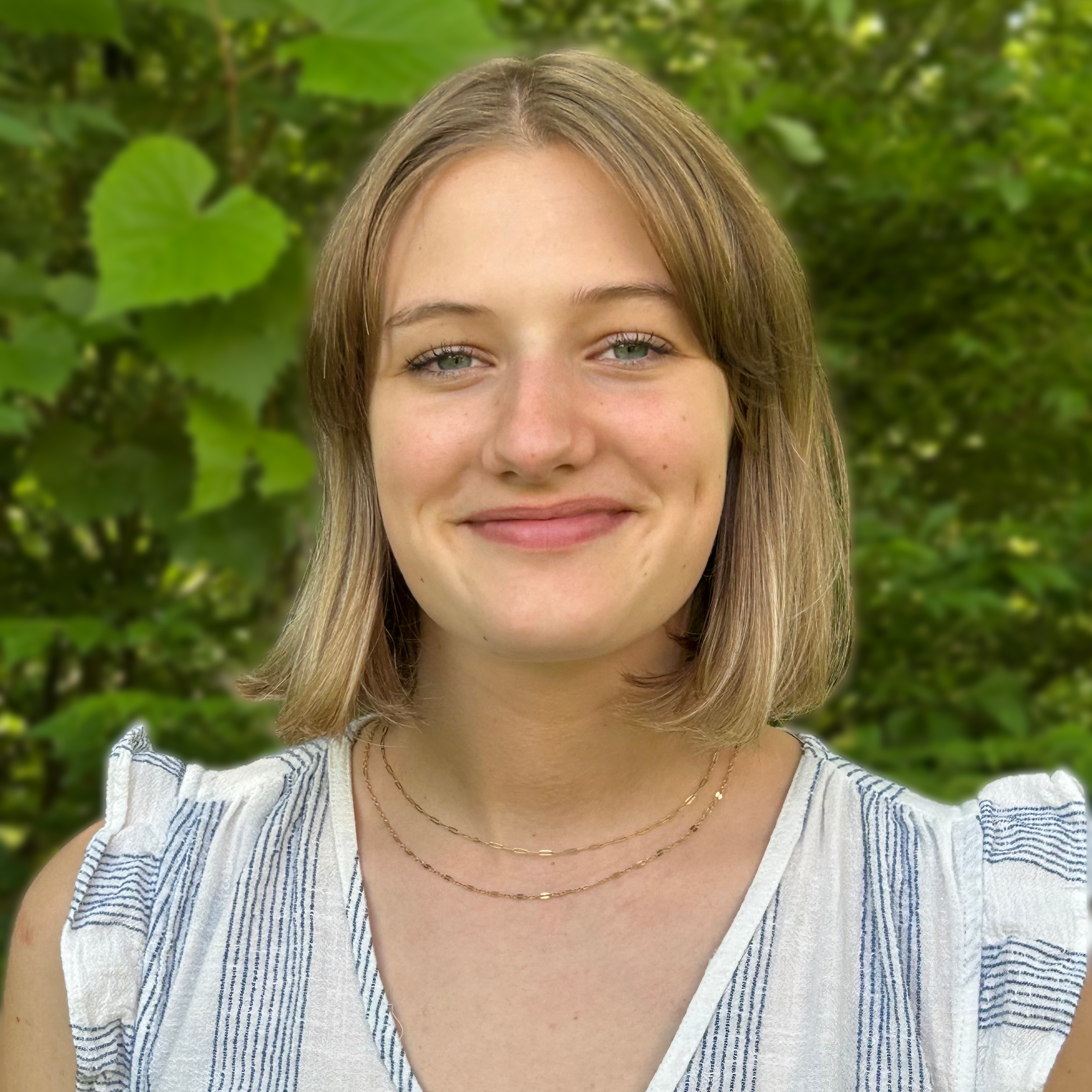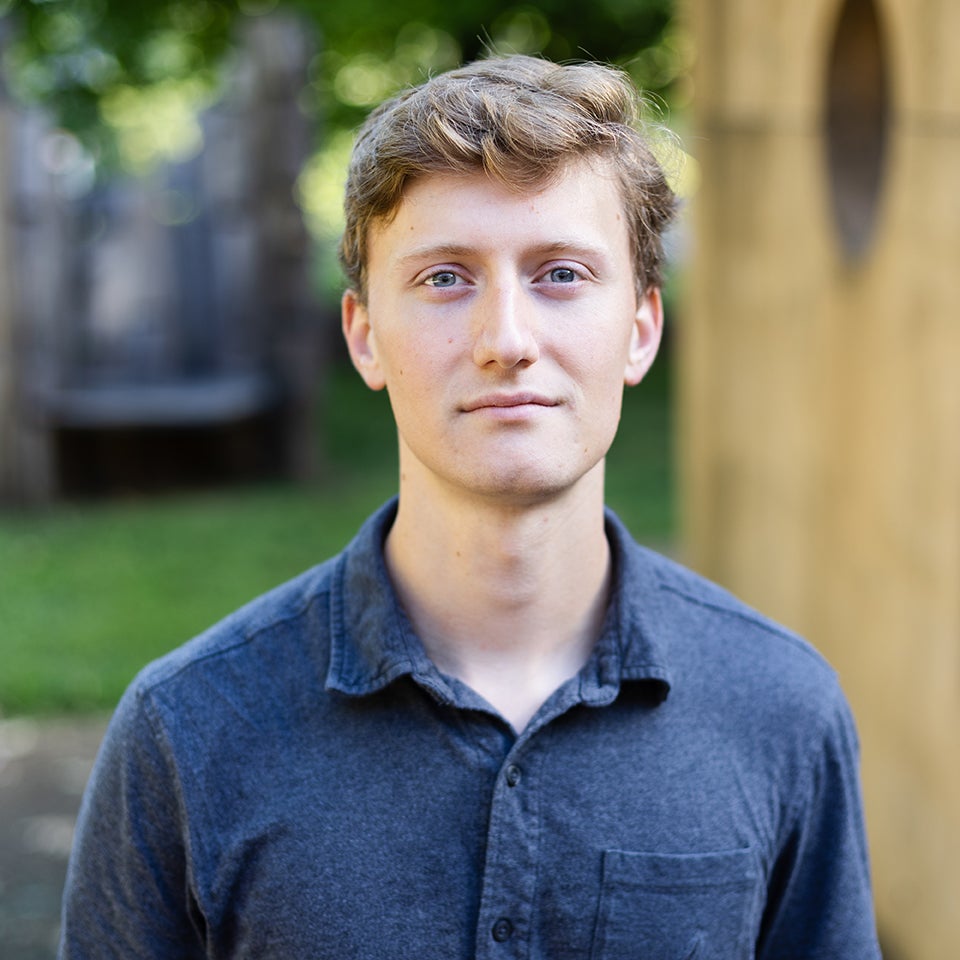
Student Spotlight: On the Tidelands — William Riedlinger Interns with the Natural Infrastructure Lab
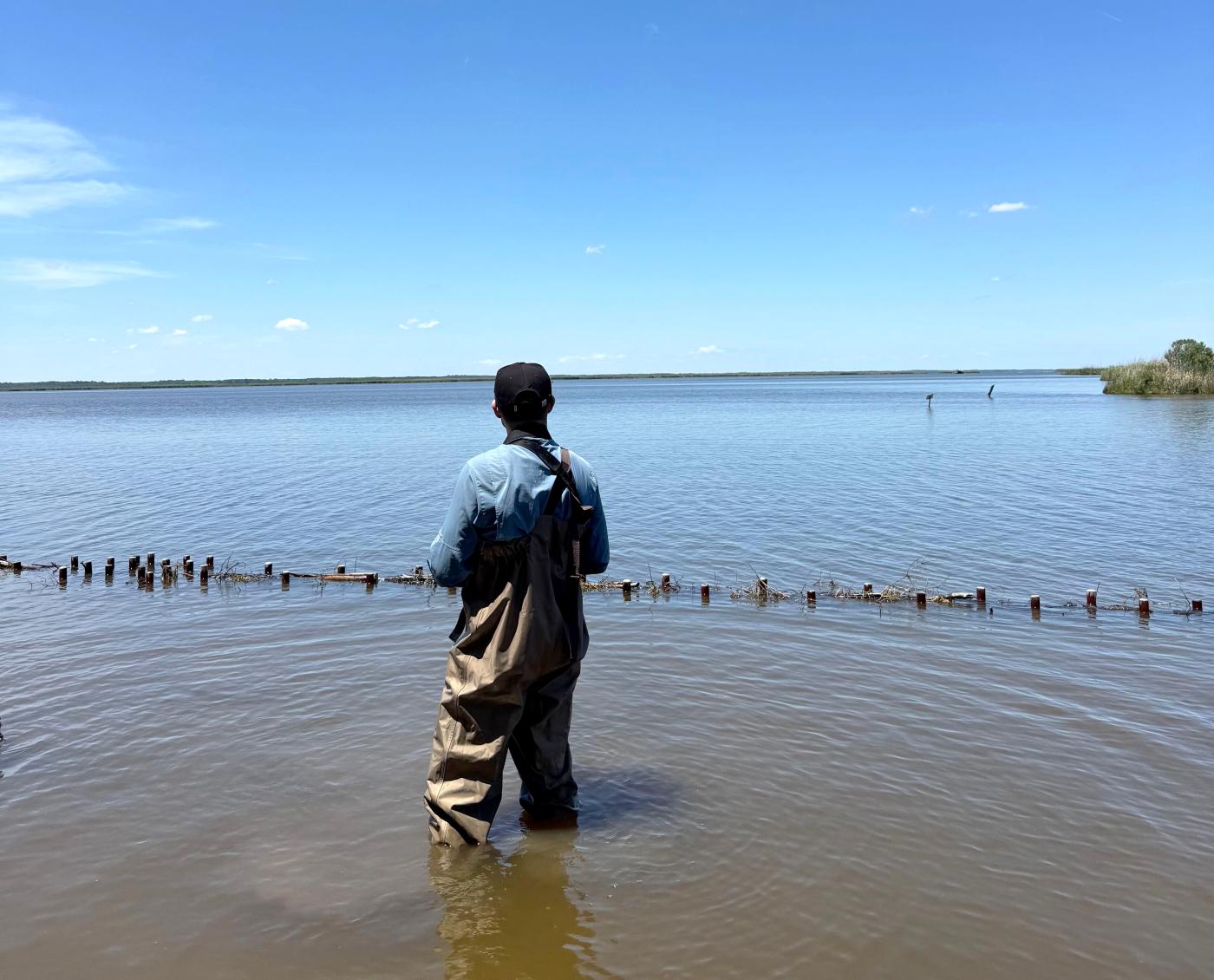
When you meet William Riedlinger (MLA '27) for the first time, you can't help but notice his genuine excitement and curious nature. He approaches conversations with thoughtful questions and an infectious enthusiasm about learning new things. William began his studies at the UVA School of Architecture in the fall of 2024, bringing with him a unique set of skills and experiences, ranging from anthropology to carpentry to youth leadership. This summer, he joined the Natural Infrastructure Lab to support their Tidelands project, focusing on the Outer Banks of North Carolina.
We asked William to tell us more about his time with the Lab this summer and reflect a bit on what he is taking with him as he starts his second year of the Master of Landscape Architecture program.

What caught your eye about the Natural Infrastructure Lab, and why did you choose to apply for an internship?
My initial draw to landscape architecture was learning about projects that integrate climate resilience – like flood control or aquifer rejuvenation – with ecological benefits while creating beautiful public spaces.
The cross-disciplinary nature of these projects, spanning art, engineering, and natural sciences, struck me as special.
When I saw the NIL video from last year where they were playing in the wave basin, I thought, "OH! That's so cool! I want to do that!" I loved that the NIL was working on exactly the kinds of non-traditional landscape projects I was interested in. And I have to say, seeing all the work pinned up around the lab was so beautiful and compelling. You instantly knew this was a creatively charged space aiming to push the boundaries of what landscape architecture can be today.
|
Image
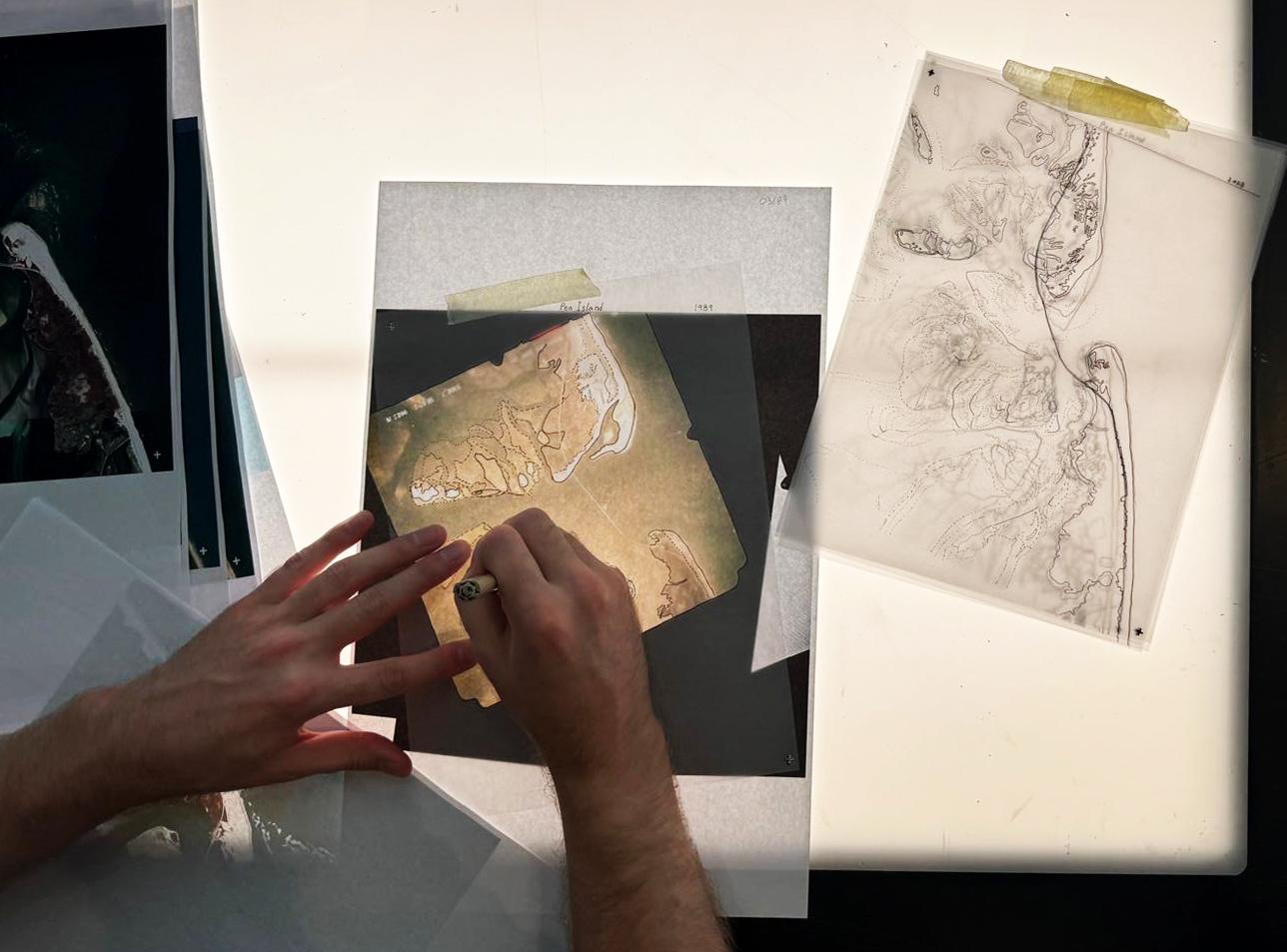
|
|
Image

|
| William studying shoal dynamics using methods of drawing, observation, and data collection. The resulting diagram tells the story of the shoals around the Oregon Inlet, which helped inform the final design ideas. (Photo by Ruby Zielinski; Shoal Diagram by William Riedlinger) |
What kind of project were you working on, and where was it situated?
I worked mostly on the Tidelands project, located on the North Carolina coast. There were three project sites: Pea Island, Alligator River, and Mackay Island. My focus was primarily on Pea Island, a barrier island south of Oregon Inlet. I was developing designs to prevent marsh erosion on the back side of the island caused by powerful inlet currents. This involved extensive research on inlet dynamics, traditional infrastructure, barrier islands, and marshes, as well as producing drawings to synthesize what I'd learned.
How has your design process been impacted by what you learned this summer?
In so many ways, but what stands out most is how I sketch out design ideas.
There was a big emphasis in the lab on using drawing as a way to ask questions and generate new ones – making multiple iterations of a single idea quickly but with precision.
It really sunk in that except for construction documents, drawings are just tools for working out ideas. They don't need to be beautiful or perfect, and this tool can be used at all stages of the design process.
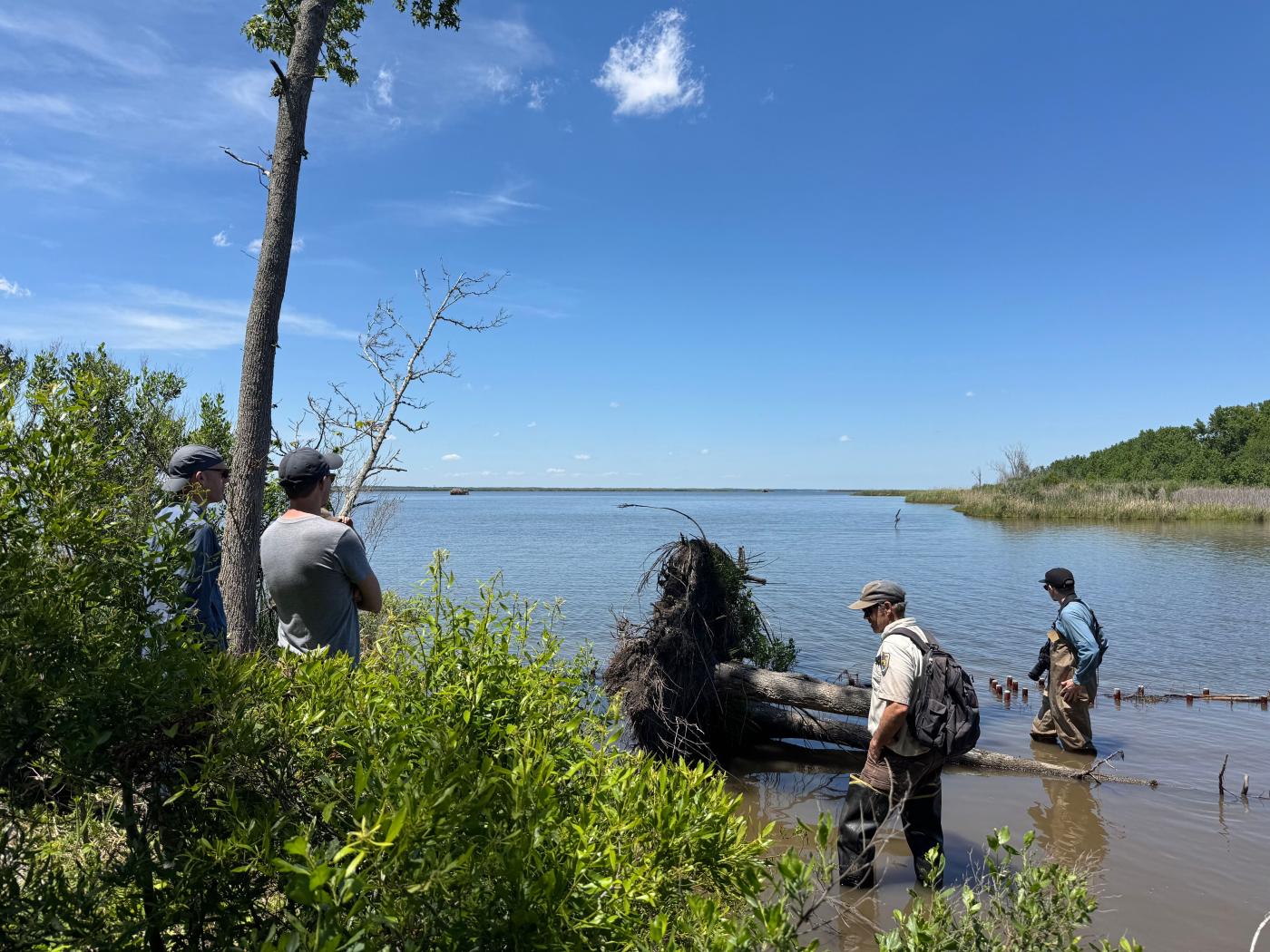
What is natural infrastructure to you, and has your perspective on it changed over time at the Lab?
Ha! It's a bit of a vague term that means different things to different people, and it's kind of hard to pin down because there are so many different types. The way I'd define natural infrastructure right now is design that uses lower-impact materials, such as sediment, rock, and wood, ideally sourced locally, to influence natural processes in a desired way without totally disrupting them. I also think an important component is that the design takes inspiration from the surrounding landscape, so it doesn't feel like it was just plopped down, destroying the beauty of the space.
Bonus - what song would you use to describe your time at the Lab this summer?
This might be the hardest question. It might have to be Enter Sandman by Metallica.
Check out William's work as well as take a deeper dive into the Natural Infrastructure Lab's process in their upcoming exhibition, NIL_The Banks: A Glimpse into the Tidelands of North Carolina — on view starting October 8th, with a research presentation on Thursday, October 16th.

